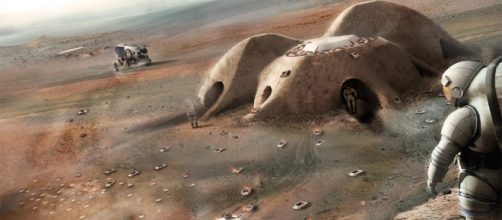When people finally venture to Mars, they will need to have a place to live and work in relative safety from that planet’s harsh environment. Until recently two choices presented themselves for building habitats and labs. The first approach would be to use hard shell modules similar to the ones that comprise the international space station. The second is to use inflatable modules, one of which is being tested on the ISS. NASA and other organizations are now exploring a third approach, using either local materials, materials brought with the astronauts, or a combination of the two to 3D print the habitats that will comprise a Martian home for astronauts on the first interplanetary voyage of discovery.
The MakerBot Mars Base Challenge
Several years ago, the 3D printing company MakerBot and NASA’s Jet Propulsion Laboratory combined forces to create the MakerBot Mars Base Challenge. The idea was that private groups would compete for cash prizes in a three-phase contest to demonstrate how 3D printing could be used to set up a Mars base so that it can be ready and waiting for the first astronauts to reach the Red Planet. The goal is to create a dome that would protect astronauts from the extremes of the Martian environment, extreme cold, radiation, a dearth of oxygen, dust storms, and so on while providing something resembling home 140 or so million miles from Earth.
How are the contestants doing so far?
The Mars-based challenge is in the middle of Phase Two, and already some of the contestants have developed some innovative processes. The top three teams in the contest so far have used recycled plastic in the designs for their 3D Printed habitats. Thermoplastic could be printed using discarded shipping material or even from local materials found on Mars.
The contest in currently moving into the third stage of Phase Two where the contestants will have to build a dome and submit samples for stress testing. Phase Three will require the participants to build a dome using autonomous robots, much like would happen on the surface of Mars. Thus far, some of the teams have earned $200,000 between them for developing 3D printing techniques.
3D Printing in Space
3D printing promises to change the way we do space exploration as well as the economic development of space. 3D printers, such as one being tested on the International Space Station, can be used to build spare parts and tools on demand. NASA has delved into 3D printed food for astronauts on long-duration space voyages. Companies such as Deep Space Industry are exploring ways to 3D print products using materials mined on the moon or asteroids. And, it goes almost without saying that the new technology has already started to benefit life on Earth in many and profound ways.


